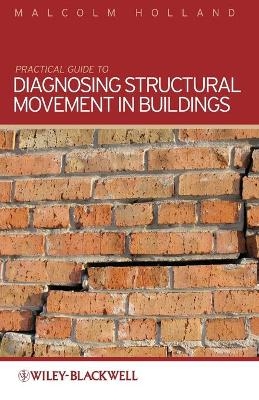
Practical Guide to Diagnosing Structural Movement in Buildings
Wiley-Blackwell (Verlag)
978-0-470-65910-6 (ISBN)
- Titel erscheint in neuer Auflage
- Artikel merken
Malcolm Holland, BSc(Hons) MRICS, started his career as a land surveyor in the Royal Engineers before leaving the Army to return to higher education. He gained a degree in Building Surveying and then qualified as a Chartered Surveyor in 1988. Since then he has worked predominantly in private practice and mostly in the field of residential surveying. During the mid 1990s he spent 4 years as a senior lecturer at DeMontfort University teaching building construction and pathology to general practice surveying students. He returned to private practice in 1997 and continues to practice as a residential building surveyor.
Introduction viii List of Figures xi Acknowledgements xvi PART 1 FIRST PRINCIPLES 1 1.1 First Principles 3 1.2 Crack Patterns and Cracks 8 1.3 Rotational Movement 9 1.4 Contra Rotational Movement 11 1.5 Weak Routes 14 1.6 Load Distribution 22 1.7 Movement and Orientation 26 1.8 Summary of First Principles and Process 28 PART 2 CRACKS IN BUILDINGS NOT RELATED TO FOUNDATIONS 31 2.1 Expansion Cracking 33 2.2 Cavity Wall Tie Corrosion 44 2.3 Corrosion of Metal Built into Walls 53 2.4 Vibration of Built in Fixings 57 2.5 Roof Spread 60 2.6 Springing from Deflected Beams 67 2.7 Lack of Lateral Stability 70 2.8 Lack of Lateral Stability in Modern Gable Walls 76 2.9 Overloaded Beams 79 2.10 Absence of Lintels (Beams) Over Openings in Cavity Walls 84 2.11 Overloaded Floors 91 2.12 Overloaded Walls 95 2.13 Differential Movement 99 2.14 Arch Thrust and Arch Flattening 101 2.15 Load Path Cracking 109 2.16 Bulging of Walls due to Decay of Bonding Timbers 112 2.17 Bulging and Separation in Solid Brick Walls 115 2.18 Separation of Rubble Filled Stone Walls 118 2.19 Floor Slab Settlement (Compaction) 120 2.20 Load Concentrations 127 2.21 Sulphate Attack 129 2.22 Concrete Block Shrinkage 134 2.23 Shrinkage of Calcium Silicate Bricks 138 PART 3 CRACKS IN BUILDINGS RELATED TO THE FOUNDATIONS AND GROUND MOVEMENT 141 3.1 Introduction 143 3.1.1 Design for Load 145 3.1.2 Design for Stability 147 3.1.3 Identifying Below Ground Defects 148 3.2 Foundation Movement Caused by Clay Shrinkage 151 3.3 Clay Heave 159 3.4 Seasonal Expansion of Clay Subsoil 162 3.5 Eccentric Loading on Foundations 164 3.6 Uneven Loading 167 3.7 Load Concentrations on Foundations 169 3.8 Differential Foundation Movement 171 3.9 Initial Settlement after Construction or Alterations 176 3.10 Leaking Drains and Water Discharge Near to Buildings 179 3.11 Drains and Drain Trenches 182 PART 4 REPAIR METHODS 185 4.1 Introduction 187 4.2 Re-pointing 189 4.3 Re-pointing with Epoxy Mortar 191 4.4 Stitching in Brickwork 192 4.5 Reinforcing Brick Mortar Joints 193 4.6 Tie Bars 195 4.7 Restraint Straps 198 4.8 Buttresses/Piers 200 4.9 Preventing Roof Spread 201 4.10 Underpinning 203 4.11 Expanding Foam Underpinning 207 4.12 Grouting 209 4.13 Root Barriers 211 Index 213
| Verlagsort | Hoboken |
|---|---|
| Sprache | englisch |
| Maße | 139 x 216 mm |
| Gewicht | 340 g |
| Themenwelt | Technik ► Bauwesen |
| ISBN-10 | 0-470-65910-6 / 0470659106 |
| ISBN-13 | 978-0-470-65910-6 / 9780470659106 |
| Zustand | Neuware |
| Haben Sie eine Frage zum Produkt? |
aus dem Bereich



